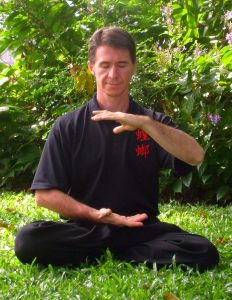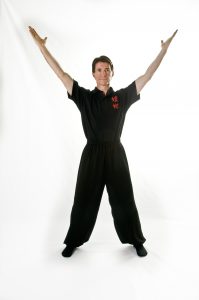The Art of Breathing
I recently noticed a post on one of our Facebook pages that gave a limited view of breathing. It described breathing as only involving inhaling, exhaling, and holding. Now, as a description of the physical mechanisms of breathing this is fairly accurate. But if you think this also describes the methods and functions of breathing then your understanding falls short and many benefits available to your health and martial success will be lost to you.
A very basic example of how you decide to breath and it’s ability to have different effects on your body is whether you inhale through your nose or through your mouth. If your goal is to increase the oxygen saturation in your system then you would practice inhaling through the mouth. The force of the inhale, the speed of the repetitions, the ratio of in to out, will also change the effect of this type of breathing.
On the other hand if your goal is to increase Qi and influence its flow around the body then you would opt for inhaling through the nose.
Understanding that breathing is the bridge between our body and mind is also of vital importance. You can then influence the state of either. Short, shallow, fast, hard, irregular breathing leads to tension in the body. This tension limits the flow of blood through the tissues of your body. Limited blood flow means a lack of oxygen and Qi and the degeneration of these tissues. This type of breathing leads to a scattered and emotional mindset. You can end up with anxiety, insomnia, poor decision making, negative self dialogue, an inability to focus for long periods of time, disconnection with your community on a local and global scale, and a loss of compassion that can result in all manner questionable actions to self and others.
 If you use the opposite type of breathing – slow, soft, deep, long, continuous, silent, and full – then the body responds in kind. The tissues of the body soften and relax, oxygen rich blood penetrates to a deep level. The mind becomes quite and slows down, overtime self dialogue stops too. You can take the time to see a clear path and make the right decisions in life. This second type of breathing puts the body in a state where it can move with speed and fluidity, and produce maximum energy output for martial arts and combat.
If you use the opposite type of breathing – slow, soft, deep, long, continuous, silent, and full – then the body responds in kind. The tissues of the body soften and relax, oxygen rich blood penetrates to a deep level. The mind becomes quite and slows down, overtime self dialogue stops too. You can take the time to see a clear path and make the right decisions in life. This second type of breathing puts the body in a state where it can move with speed and fluidity, and produce maximum energy output for martial arts and combat.
From a Western perspective these two types of breathing influence our nervous system. The shallow, fast type of breathing keeps our sympathetic nervous system engaged. We are constantly in a state of fight or flight, even when we think we are at rest. Over time this will deplete your energy reserves and weaken the immune system. When we use the soft, deep breathing our sympathetic nervous system winds down and our parasympathetic nervous system becomes engaged. This is our rest, relax, restore, and recharge side of the nervous system. Your body can relax down to the organ level. As the organs soften and receive more Qi and blood they can function much more optimally. This leads to better health of the body, mind, and spirit.
Ying Yi Hai Sun Gung is a Chinese formula used in martial arts and Qigong. It describes how to go from a beginner to a more advanced practitioner. Your intent can influence the breath and the resulting functions in the body. In the formula above, the Yi (intent) and Sun (concentration) make up two of the five stages in training to become proficient at what you do. Hai (breathing) makes up a third. Using this mental connection and concentrated effort is everything when it comes to achieving more than just physical or external proficiency in your art/exercise/other practices. It takes your skill to a whole new level. And it is essential to developing the correct breathing style, especially when you are under pressure. Stress, or attacks, will tighten the body and restrict the breathing. This is going to lead to sub optimal reactions and energy output.
 When using the mind we can direct the breath and decide where to actually breathe to, like the bottom, top, sides, or back of the lungs, filling from the top down or the bottom up. We can move the focus to inhalation or exhalation, using different ratios between them, holding at the end of inhalation and/or exhalation. Our breathing can be along the outside or inside of the nostrils, we can control the diaphragm to go up or down on the inhalation or the exhalation, etc. We can add different physical elements like alternating open and closed nostrils, contracting and expanding limbs, the torso, the channels. All of these methods create many different ways to utilise our breathing mechanism (see the list below) and these open up so many possibilities for our health, well being, vitality, longevity, and internal and external power.
When using the mind we can direct the breath and decide where to actually breathe to, like the bottom, top, sides, or back of the lungs, filling from the top down or the bottom up. We can move the focus to inhalation or exhalation, using different ratios between them, holding at the end of inhalation and/or exhalation. Our breathing can be along the outside or inside of the nostrils, we can control the diaphragm to go up or down on the inhalation or the exhalation, etc. We can add different physical elements like alternating open and closed nostrils, contracting and expanding limbs, the torso, the channels. All of these methods create many different ways to utilise our breathing mechanism (see the list below) and these open up so many possibilities for our health, well being, vitality, longevity, and internal and external power.
Breathing practices help in changing our physical health, releasing stress and tension, calming the mind and emotions, and allowing us control over systems that many people are disconnected from.
Some of the different breathing practices available to us include :
- Natural breathing
- Buddhist breathing
- Taoist breathing
- Pranayama (Yogic breathing methods)
- Block breathing
- Systema’s Burst breathing
- Wim Hof’s breathing methods
- Tortoise breathing
- Thread breathing
- Skin Breathing
- Palms and Soles Breathing
- Whole Body breathing
- Bone Breathing
- Embryonic Breathing
Breathing is something we do every day but often only at 10% capacity to avoid passing out. Why not engage your ‘in, out, and hold’ in ways that will get much more positive and practical use out of your breathing. This often overlooked, automatic process, that keeps us alive and can dictate the length and vitality of our life is viewed in China as something that we can deplete quickly leading to premature ageing, stiffness and immobility, degeneration, and death. Or use it wisely to improve your health, increase vitality and wellbeing, to move with comfort and ease, to produce power, and prolong your life.


